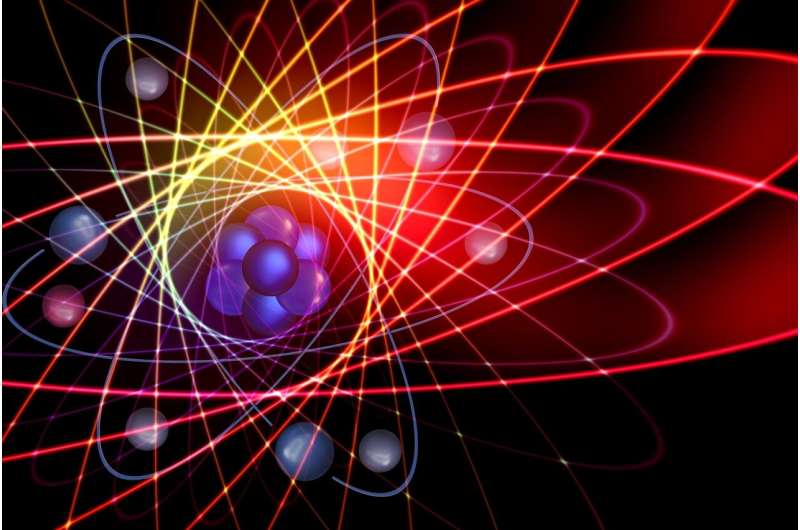Researchers have found evidence for an anomalous phase of matter that was predicted to exist in the 1960s. Harnessing its properties could pave the way to new technologies able to share information without energy losses. These results are reported in the journal Science Advances.
While investigating a quantum material, the researchers from the University of Cambridge who led the study observed the presence of unexpectedly fast waves of energy rippling through the material when they exposed it to short and intense laser pulses. They were able to make these observations by using a microscopic speed camera that can track small and very fast movement on a scale that is challenging with many other techniques. This technique probes the material with two light pulses: the first one disturbs it and creates waves—or oscillations—propagating outward in concentric circles, in the same way as dropping a rock into a pond; the second light pulse takes a snapshot of these waves at various times. Put together, these images allowed them to look at how these waves behave, and to understand their ‘speed limit.’
“At room temperature, these waves move at a hundredth of the speed of light, much faster than we would expect in a normal material. But when we go to higher temperatures, it is as if the pond has frozen,” explained first author Hope Bretscher, who carried out this research at Cambridge’s Cavendish Laboratory. “We don’t see these waves moving away from the rock at all. We spent a long time searching for why such bizarre behavior could occur.”

The only explanation that seemed to fit all the experimental observations was that the material hosts, at room temperature, an ‘excitonic insulator’ phase of matter, which while theoretically predicted, had eluded detection for decades.
“In an excitonic insulator, the observed waves of energy are supported by charge neutral particles that can move at electron-like velocities. Importantly, these particles could transport information without being hindered by the dissipation mechanisms that, in most common materials, affect charged particles like electrons,” said Dr. Akshay Rao from the Cavendish Laboratory, who led the research. “This property could provide a simpler route toward room-temperature, energy-saving computation than that of superconductivity.”
Find your dream job in the space industry. Check our Space Job Board »
The Cambridge team then worked with theorists around the world to develop a model about how this excitonic insulating phase exists, and why these waves behave in this way.
“Theorists predicted the existence of this anomalous phase decades ago, but the experimental challenges to see evidence of this has meant that only now we are able to apply previously developed frameworks to provide a better picture of how it behaves in a real material,” commented Yuta Murakami, from the Tokyo Institute of Technology, who collaborated on the study.
“The dissipationless energy transfer challenges our current understanding of transport in quantum materials and opens theorists’ imaginations to new ways for their future manipulation,” said collaborator Denis Gole, from the Jozef Stefan Institute and University of Ljubljana.
“This work puts us a step closer toward achieving some incredibly energy-efficient applications that can harness this property, including in computers,” concluded Dr. Rao.











